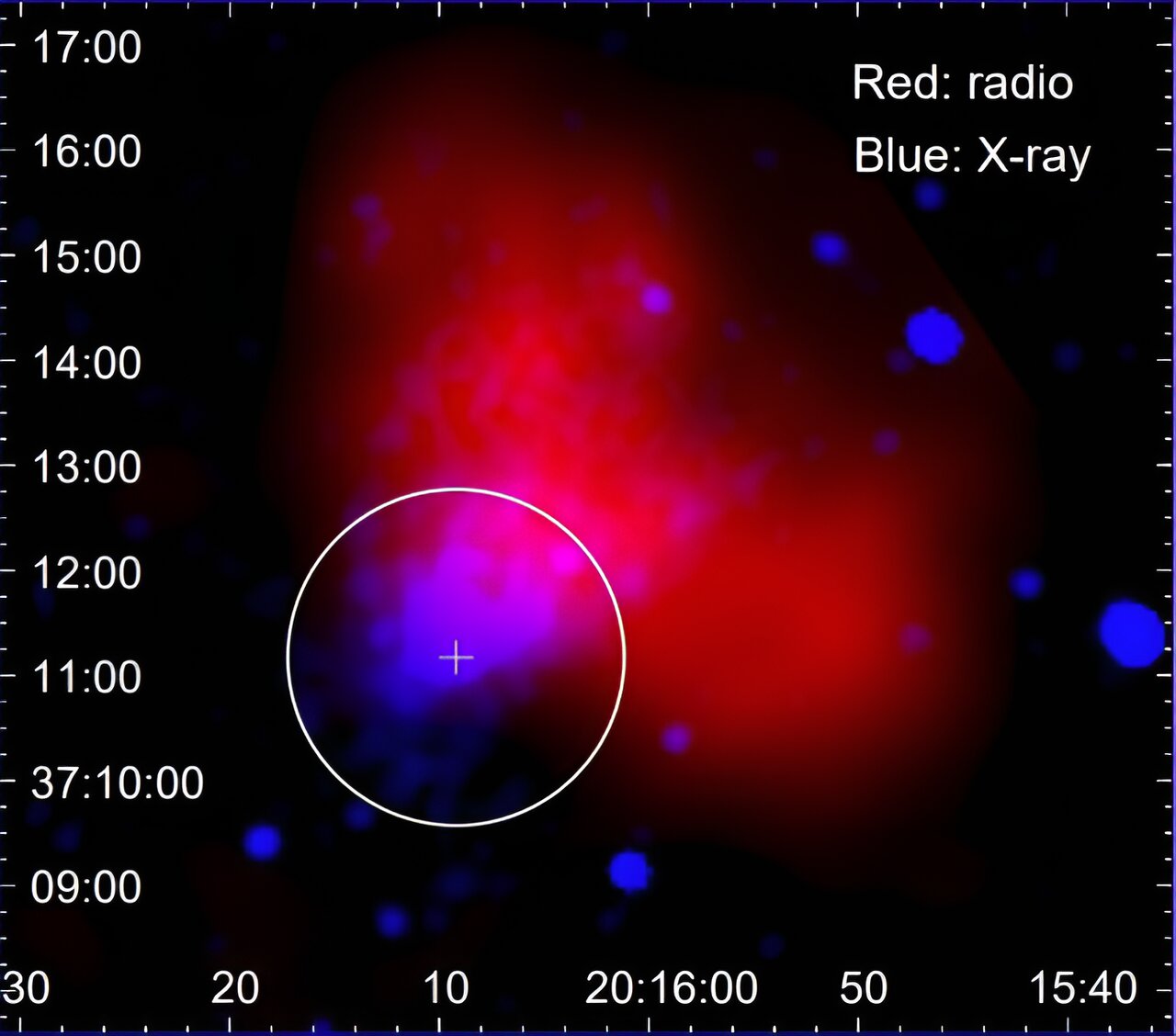Astronomers from Nanjing University in China and other institutions have made a significant discovery using the Five-hundred-meter Aperture Spherical radio Telescope (FAST). They have detected a radio pulsar in a supernova remnant known as CTB 87. This exciting finding was reported in a paper published on the arXiv pre-print server on February 1.
CTB 87 is a plerionic supernova remnant (SNR) with an X-ray luminosity nearly 100-times weaker than the Crab Nebula in the 0.15−3 keV band. It hosts a pulsar wind nebula (PWN) with trailing morphology in X-rays. However, no such object in this SNR has been found to date. The team of astronomers led by Nanjing University’s Qian-Cheng Liu investigated a point-like X-ray source in CTB 87, designated CXOU J201609.2+371110. They report that using FAST radio pulses have been discovered from this source.
The researchers wrote, “We report on our discovery of the radio pulsar, PSR J2016+3711, in supernova remnant CTB 87, with a ∼ 10.8???? significance of pulses, which confirms the compact nature of the X-ray point source in CTB 87.”
According to the paper, PSR J2016+3711, located at a distance of about 43,400 light years, has a spin period of 50.8 milliseconds and a dispersion measure of approximately 428 pc/cm3. The pulsar’s spin down luminosity was measured to be 22 undecillion erg/s, while its characteristic age is estimated to be 11,100 years. PSR J2016+3711 therefore is the first pulsar in SNR detected with FAST.
2024-02-10 18:00:04
Post from phys.org
